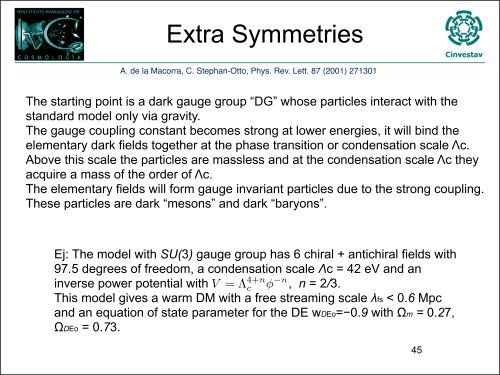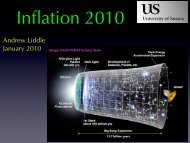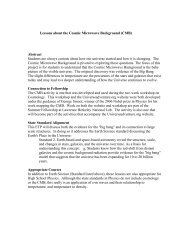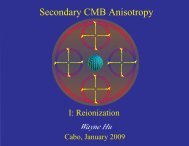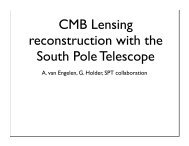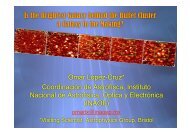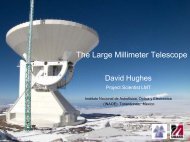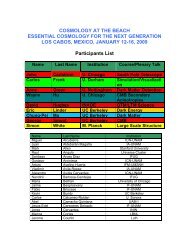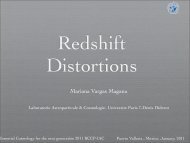Problems and Alternatives to Lambda Cold Dark Matter - Berkeley ...
Problems and Alternatives to Lambda Cold Dark Matter - Berkeley ...
Problems and Alternatives to Lambda Cold Dark Matter - Berkeley ...
Create successful ePaper yourself
Turn your PDF publications into a flip-book with our unique Google optimized e-Paper software.
Extra Symmetries<br />
A. de la Macorra, C. Stephan-Ot<strong>to</strong>, Phys. Rev. Lett. 87 (2001) 271301<br />
The starting point is a dark gauge group “DG” whose particles interact with the<br />
st<strong>and</strong>ard model only via gravity.<br />
The gauge coupling constant becomes strong at lower energies, it will bind the<br />
elementary dark fields <strong>to</strong>gether at the phase transition or condensation scale Λc.<br />
Above this scale the particles are massless <strong>and</strong> at the condensation scale Λc they<br />
acquire a mass of the order of Λc.<br />
The elementary fields will form gauge invariant particles due <strong>to</strong> the strong coupling.<br />
These particles are dark “mesons” <strong>and</strong> dark “baryons”.<br />
Ej: The model with SU(3) gauge group has 6 chiral + antichiral fields with<br />
97.5 degrees of freedom, a condensation scale Λc = 42 eV <strong>and</strong> an<br />
inverse power potential with V = Λ , n = 2/3.<br />
This model gives a warm DM with a free streaming scale λfs < 0.6 Mpc<br />
<strong>and</strong> an equation of state parameter for the DE wDEo=−0.9 with Ωm = 0.27,<br />
ΩDEo = 0.73.<br />
4+n<br />
c φ −n<br />
45


